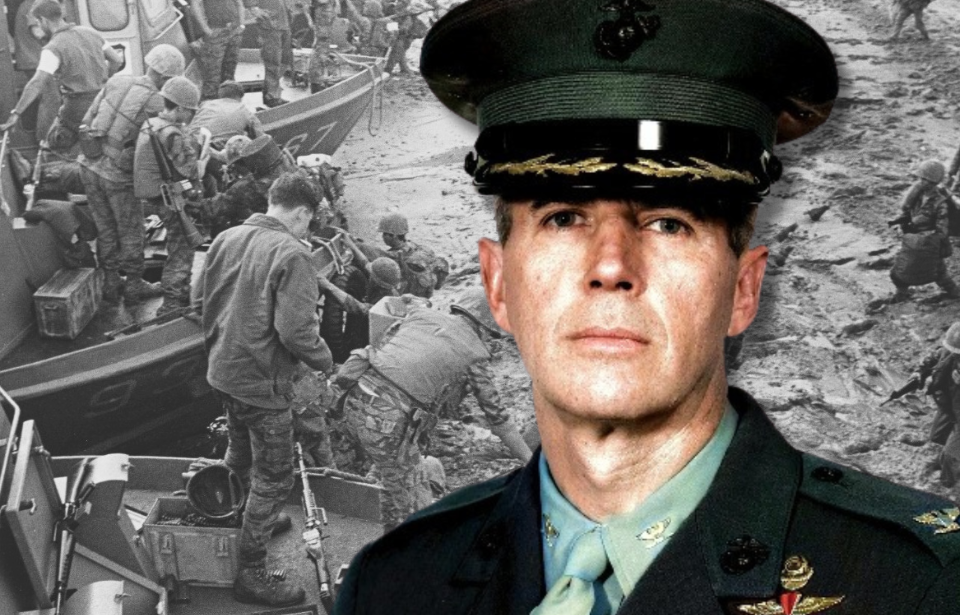Đông Hà, the northernmost city in South Vietnam, was once bustling with military activity. Home of the 4th Marine Division and a major helicopter base, and surrounded by artillery fire bases, it directly supported those stationed at Con Thien and the Eastern Demilitarized Zone (DMZ). It had provided the starting point for the relief of the besieged Khe Sanh garrison, and housed the best bridge over the Cửa Việt.
Five years earlier, there were 50,000 Marines deployed to protect against the North Vietnamese Army (NVA). By March 30, 1972, however, there was only one battalion of South Vietnamese Marines to stop a vicious onslaught of 30,000 NVA soldiers, who were reinforced by 200 main battle tanks (MBT). Poised for the headlong assault on Đông Hà and the capture of Huế, the enemy didn’t realize there was still one US Marine in the city: Capt. John Ripley.
John Ripley had a lifetime of preparation
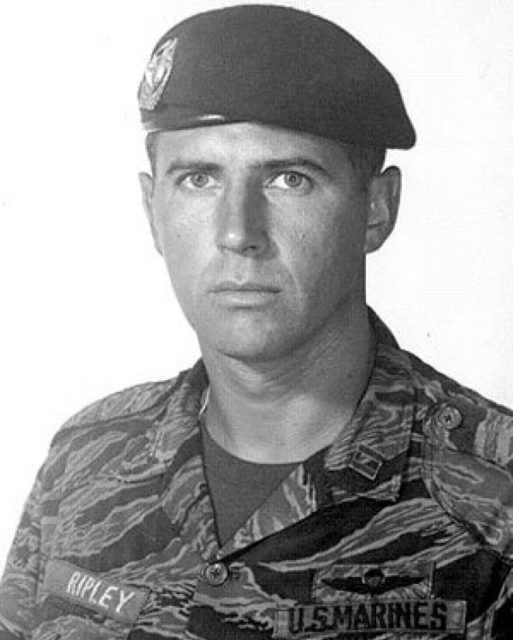
John Ripley had been a daring child, with a burning desire to succeed. After graduating high school in 1957, he followed his two older brothers into the US Marine Corps. His desire to succeed was transformed into an indomitable will by the drill instructors at the legendary Marine Corps Recruit Depot, Parris Island.
The young Marine’s talent and drive were recognized, and he quickly earned an appointment to the US Naval Academy. Despite being unprepared for the academic rigor at the Academy, Ripley’s sheer effort and determination earned him a degree in electrical engineering. He was commissioned as a second lieutenant in 1962.
At the Basic School in Quantico, Virginia, he learned how to lead an infantry platoon. Upon his graduation, he served a sea duty billet as a rifle and weapons platoon commander, and also as a force reconnaissance platoon commander. He then attended the US Army’s Parachute, Jump Master and Ranger courses, as well as the US Navy’s Underwater Demolitions and Scuba courses.
In Marine circles, Ripley was “dual cool,” with a Scuba Badge and Jump Wings.
Ripley’s Raiders and the British Royal Marines
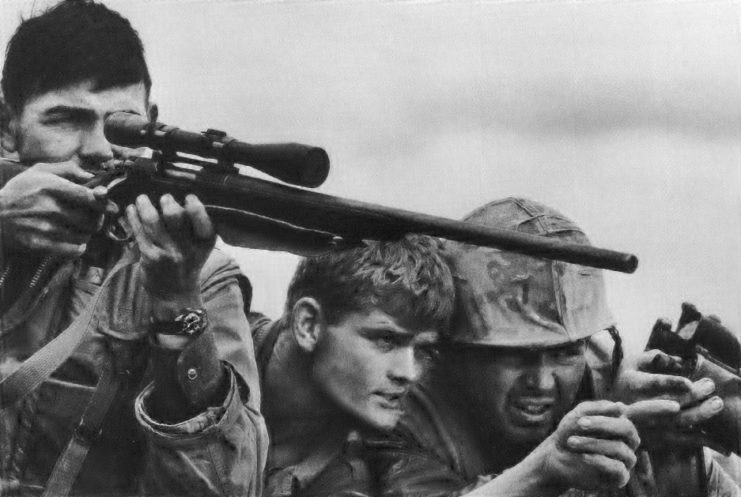
In October 1966, John Ripley became the fearless commander of “Ripley’s Raiders,” fighting in Con Thien and Khe Sanh. While wounded four times, he refused more than one Purple Heart, as policy at the time meant immediate evacuation.
After Vietnam, Ripley was assigned a desk job, until he found an unusual method of escape: becoming an exchange officer to the British Royal Marines. Having completed the demanding Commando Course, he became the third individual to achieve a “quad bod” – the completion of Jump, Ranger, Navy SEAL and Commando training – and earned the Green Beret of the Royal Marines.
In command of troops in both the Royal Marines and the Royal Navy’s Special Boat Service (SBS), Ripley served in Malaya and Norway. When he was, again, designated a desk job at Headquarters Marine Corps in late 1971, he volunteered to be redeployed to Vietnam.
John Ripley joined the Vietnamese Marine Corps
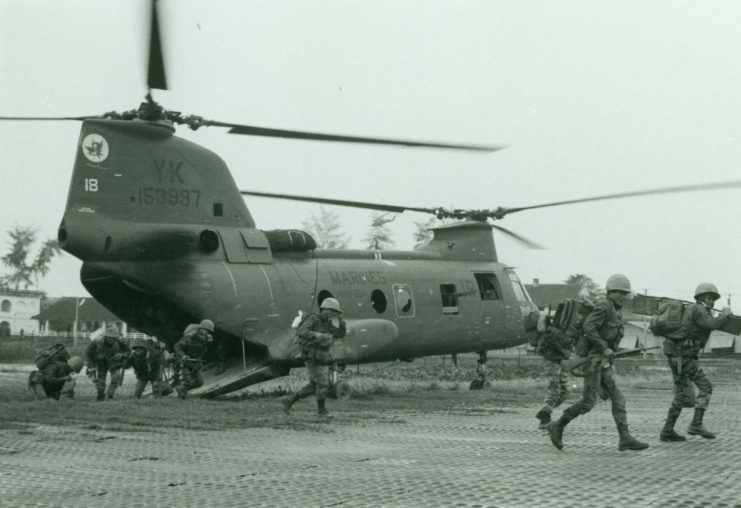
John Ripley was one of only a few hundred US Marines remaining in Vietnam, and a lifetime of preparation was soon to be put to the test. Assigned to the 3rd Battalion of the Vietnamese Marine Corps as a senior advisor, he was combat experienced and ready when the Vietnamese Army wasn’t.
From the over 500,000 troops in 1968, there was now only 27,000 US troops in all of Vietnam. The South Vietnamese relied on undisciplined, poorly-led conscripts, and they fared badly in battle against the North, who were their opposites in almost every respect.
The Vietnamese Marine Corps, however, was the exception. These battle-hardened servicemen were disciplined by Vietnamese who’d attended the Drill Instructor School at Parris Island. They were also led by officers who’d attended Basic School. As a fire brigade, they faced combat for up to six months, before returning to their home base for a month to rest. The 3rd had recently returned from refitting near Saigon and was at full-strength.
A Marine may be outnumbered, but never outfought
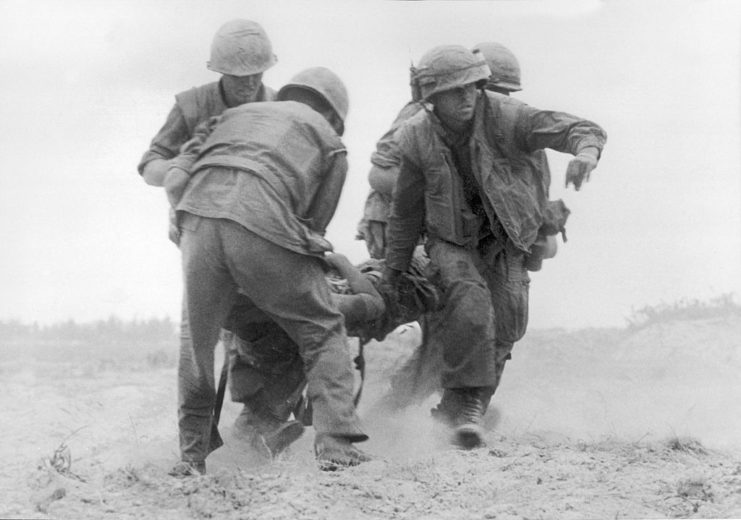
On March 30, 1972, the North Vietnamese attacked. Intense artillery from the north of the DMZ was followed by assaults that quickly erased the forces guarding the northern approaches. Those not overrun were sent fleeing down Highway 1.
The 3rd Battalion was shifted to protect the vital bridge that provided passage over the Cửa Việt, at Đông Hà. The 304th and 308th NVA Infantry Divisions were rolling south with 200 main battle tanks. On April 1, the 3rd ARVN Division was ordered to retreat. The North Vietnamese bore down on Đông Hà. As troops streamed south, the Marines were facing an impossible task: fighting 30,000 enemy troops.
Passing hordes of refugees, they moved into their final positions and heard someone say, “Expect lots of tanks,” over the radio. They had with them just 10 light anti-tank rockets, making them almost defenseless. The 20th Tank Battalion arrived, and the Marines clambered aboard for their final movement to the bridge.
Skirmishers were already crossing upstream, over a dilapidated, railroad bridge designed for foot-traffic. John Ripley directed the tank he was in to fire, knocking back the enemy. Machine guns and mortars on the opposite bank immediately began a furious fusillade of fire against the tanks and Marines while the enemy soldiers regrouped behind a small rise that protected them from the tanks.
The small column of Marines riding M48 Pattons continued slowly, surrounded by fleeing civilian refugees. A column of Soviet-supplied T-54s was spotted across the river and taken under fire by the 20th. However, the T-54 outgunned the M48; head on, the remaining ones would slaughter their smaller opponents. The Marines knew they had to get to the bridge first. If their opponents got across, the battle – and, maybe, the war – would be lost.
The M48s stopped well away from the bridge. The Marines climbed down and continued on foot. Ripley watched the lead T-54 reach the structure and begin to cross, at which point a Marine with an anti-tank rocket hit the tank. The stricken vehicle pulled back to a covered position.
Under enemy fire, Ripley made a mad dash to an old bunker some 100 meters from his position and 100 meters from the bridge. Accompanying him was his Vietnamese radioman, Maj. Jim Smock, an advisor with the 20th. A vicious firefight began as the pair made their last dash to the bridge, praying there would be a way to bring it down upon their arrival.
Đông Hà Bridge
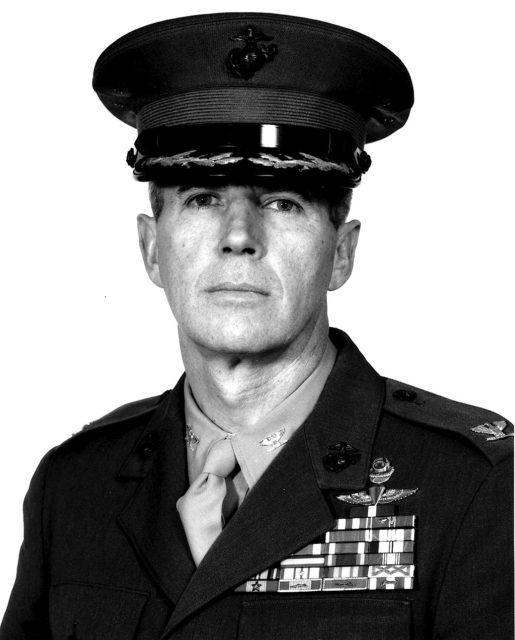
A bundle of explosives had been delivered, but hadn’t been prepped for use. The bridge was constructed of steel I-beams, overlaid with steel decking and two feet of timber sitting atop six-feet-thick concrete supports. As such, it could only be brought down via demolition.
Since the bridge’s deck was fully exposed to enemy fire, the only way to set the explosives was by hand and from underneath. From beneath the bridge, John Ripley would be able to slide cases of TNT between the edges of the I-beams to a point in the middle of the river and set satchel charges to cut them. There were six I-beams in total, creating five “channels” through which he’d need to drag explosives.
Once he’d climbed over the fence, Ripley’s legs were shredded by the razor-sharp concertina wire protecting the south end of the bridge. Despite this, he went hand-over-hand under the bridge amid the enemy fire. He finally reached the concrete support 90 meters away, and swung himself up and into the channel created by the I-beams.
Setting charges to cut the beam, Ripley traveled back down the channel. Smock passed him two 75-pound TNT cases and satchel charges, which he dragged back again. He set the charges to cut the other beam – one channel was rigged, but there were still four more to go.
Two hours later, completely spent, all the channels were finally set to detonate. Dropping to the ground and curling into a ball, Ripley rested for only a moment before retrieving primer cord and crimping the blasting caps. He then looped the coils over his shoulders and crawled back out, legs dangling and drawing fire.
Having set the cord alight with matches, Ripley crawled out once more to set a backup detonator with electrical caps. Returning to the bunker seemed to take an eternity, as Ripley’s legs woodenly refused to move quickly. He ran under fire from the other side of the river, and, with a gut-wrenching, earthshaking explosion, the bridge was finally destroyed.
Bitter aftermath
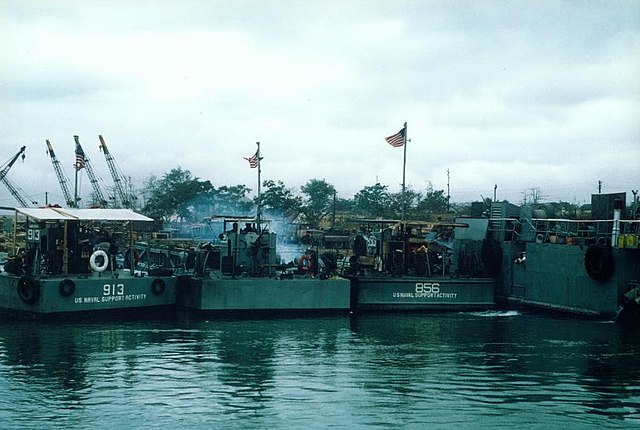
The Marines and South Vietnamese tankers continued to hold Đông Hà. An attack from the west cut through to Highway 1 south of the city, but they continued to fight, despite being surrounded.
One by one, the M48s were destroyed or ran out of gas. Ordered to breakout, the surviving tankers shouldered rifles and joined the Marines. Continuing the fight at Quảng Trị, the 3rd Battalion was finally pulled out of the line. Of the 700 men who’d begun the fight, only 52 remained.
The Easter Offensive was beaten by the North’s inability to capture Đông Hà quickly. Eventually, theys withdrew. Three years later, they returned, this time for good.
John Ripley’s further service in the US Marine Corps
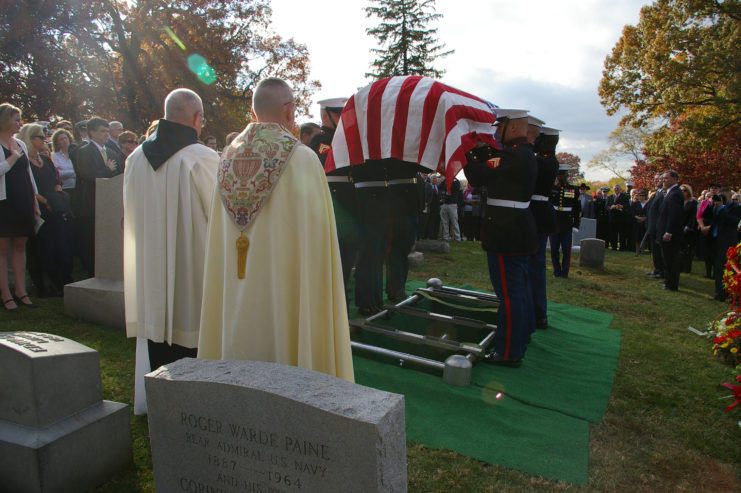
John Ripley remained in the US Marine Corps, eventually commanding an infantry battalion and, then, an infantry regiment. Always attempting to evade a desk job, he finally found one he enjoyed at the US Naval Academy as an English and History instructor. Later on, he was the commander of the Naval Reserve Officers’ Training Corps (ROTC) unit at the Virginia Military Institute (VMI), in his native Virginia.
Retiring as a colonel in 1992, Ripley accepted a position as the Dean, then, later, as chancellor of Southwestern Virginia College, before moving to the Hargrave Military Academy. He returned to duty in July 1999, to lead the US Marine Corps History and Museums Division. He passed away on October 28, 2008.
More from us: Gary Wetzel: The MoH Recipient Who Rescued His Commander, Despite Losing His Arm to Enemy Action
John Ripley earned the Navy Cross for his heroic actions on the bridge at Đông Hà, but the legacy he was most proud of was having commissioned over 500 young Marines between his time at the US Naval Academy and the VMI.
